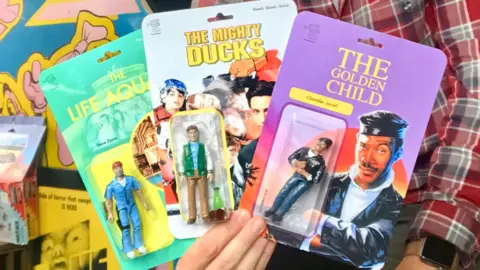**AI Dolls Take Center Stage: A Divided Response from Artists**
The advent of artificial intelligence (AI) technology has significantly transformed various sectors, including artistry, leading to the emergence of a trend where individuals create digital dolls resembling themselves using AI-generated content. Recently, this phenomenon has ignited strong reactions from artists and creatives who feel threatened by the commercialization of AI-generated images. They argue that their livelihoods are at risk as AI-generated doll images flood social media, compromising the value and artistry behind handmade creations.
Since early April, a shocking number of individuals have shared their images online to generate personalized caricatures depicted as dolls. This trend, while seemingly harmless, raises concerns over environmental impact, privacy issues stemming from sharing personal images, and a general devaluation of genuine artistic expression. Among these artists is Nick Lavellee, a custom action figure maker. For six years, he has devoted his craft to creating unique art pieces, primarily for public figures like comedians and musicians. According to Lavellee, the saturation of AI-generated imagery on social platforms has diminished public appreciation of authentic artistry.
Lavellee emphasizes the distinct artistic aesthetic that handcrafted creations embody, which he believes is devalued by the popularity of AI art. He noted, “People are sick of them,” highlighting a growing fatigue toward the redundancy of AI-generated images as more users flock to utilize such technologies. The hand-crafted figures he sells, sometimes priced as high as $250, serve as more than just toys; they represent the individual talents and time invested within each piece.
The issue extends beyond Lavellee’s workspace to a wider revolt characterized by the #StarterPackNoAI movement. This grassroots campaign, which sprouted on platforms like Instagram before gaining traction on other social media outlets such as X, aims to spotlight the uniqueness and value of human-made art versus AI-produced replicas. Many creators participating in the movement echo Lavellee’s sentiments, voicing fears that AI could undermine the public perception of their work and diminish the demand for custom creations.
Artists like Maria Picassó Piquer have joined this counter-movement, pointing to the variances present in human-created art versus the uniformity found in AI work. “While AI pieces all looked more or less the same, I was amazed at the variety of the ‘human’ works,” Picassó shared, illustrating a sense of pride in the diverse artistic expressions that human creativity nurtures.
Moreover, concerns over intellectual property rights loom large amidst the AI boom. Creators fear that AI tools often depend on databases filled with pre-existing art that were not consensually licensed, raising ethical dilemmas about the authenticity and ownership of generated images. For instance, illustrator Dav le Dessineux voiced his concern about losing contracts to AI-generated designs. Moving to Bordeaux, France, he reflected on the simplicity of art, sharing his belief that fundamental tools—like a pencil and paper—are all that artists need to thrive creatively.
The tide of frustration is not limited solely to individual artists; budding creators voice their discontent as well. For instance, Eli Dibitonto, an artist from Italy, emphasized the importance of time invested in creating artwork, describing the AI generation process as lacking the emotional depth derived from personal experience. “Art isn’t meant to be perfect or look flawless,” he adds, reinforcing the narrative around human imperfections that enrich creative expression.
Despite the backlash, some artists, including Lavellee, remain optimistic about AI’s potential to coexist with human artistry. “AI can be a useful tool,” he noted. He acknowledged his own experimentation with AI, indicating that proper application could lead to innovative advancements. However, others, like experts in technology application, argue against trivial uses of such innovative machines, calling them a “waste” of potential.
In conclusion, as AI dolls gain popularity, the artistic community remains deeply divided. While some embrace technology as a useful tool, many express fears about its implications for creative livelihoods. The essence of human artistry—spurred by emotion, connection, and personal experience—continues to manifest in various forms, encouraging a dialogue that values originality, craftsmanship, and the unique aesthetic born from human hands. As the battle between AI-generated output and handcrafted artistry rages on, it inevitably leads to a deeper contemplation of what art truly represents in today’s world.



